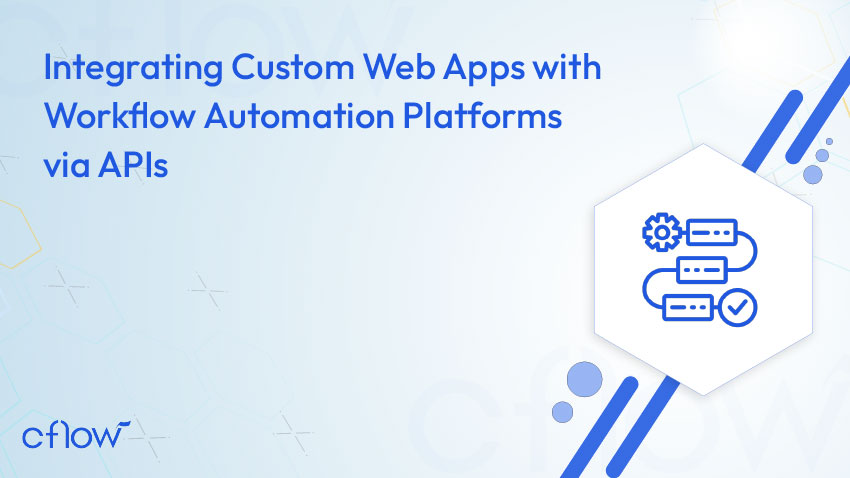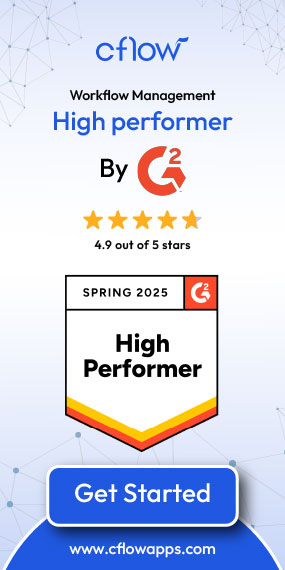Integrating Custom Web Apps with Workflow Automation Platforms via APIs

The quickly digitizing business environment demands custom web applications as fundamental tools for process management. The applications serve as essential productivity drivers for businesses when they streamline customer service operations, automate internal processes, and manage extensive datasets.
A stand-alone custom web application rarely functions as an effective solution. These applications achieve their real potential when developers integrate them with workflow automation platforms through API connections.
This article examines the vital role of API integration and demonstrates efficient web app connection methods while explaining why custom web application integration has become an essential business requirement for companies that want to remain competitive. We’ll also spotlight examples from leading companies and industries, including a glance into custom healthcare software development, where integration has revolutionized service delivery.
Table of Contents
Why Integration Matters
The development of custom web applications focuses on solving particular business requirements. The absence of integration leaves these applications functioning independently from one another. The process of manual data transfers, together with redundant input and operational inefficiencies, becomes possible when these systems operate separately. API integration functions as the solution to address this problem.
Software systems exchange data with each other through APIs, which function as communication messengers. Businesses can connect their custom-built applications to platforms like Zapier, Make, and Microsoft Power Automate through custom app API integration. These platforms function as middle solutions that unite web applications to perform automatic workflows and boost operational efficiency.
The Stats Speak for Themselves
Businesses that use automation and integration technologies, according to Gartner’s 2024 report, achieve operational efficiency improvements ranging from 20% to 30% during their initial year of implementation. MuleSoft research shows that 92% of organizations view integration as essential for reaching their digital transformation goals.
Web App Integration: Operational Use Cases
The integration of custom web applications with workflow platforms delivers substantial advantages to users. The following represent some common integration use cases:
- CRM and Marketing Automation: The synchronization of leads between a custom CRM system and tools such as HubSpot or MailChimp occurs.
- E-commerce: Operations benefit from integrating order management systems with fulfillment services, including ShipStation and Amazon FBA.
- Healthcare Workflows: Benefit from connecting patient intake systems with EHR platforms through custom healthcare software development approaches.
The implementation of web app integration simplifies operations by minimizing challenges, improving data precision, and enhancing user satisfaction for internal staff members and external customers.
Web Apps Require API Integration for Efficient Connection
The method to establish efficient web app connections involves three main operational stages:
1. Identify Integration Requirements
Begin by determining which systems require data exchange and what specific data needs to be transferred between them. Assess the automation potential of existing workflows to identify opportunities for improvement.
Example: Does your organization need Zendesk to create new support tickets automatically whenever users submit forms through your custom application?
2. Choose the Right Automation Platform
Popular workflow automation platforms include:
- Zapier: Ideal for lightweight integrations.
- Make: Best for advanced conditional logic and complex workflows.
- Microsoft Power Automate: Well-suited for enterprise environments and Microsoft-centric ecosystems.
The automation platforms support thousands of applications and enable users to integrate custom applications through REST APIs and webhooks.
3. Create or Use Existing APIs
Your custom application requires API exposure for its functionalities. The API should include RESTful endpoints for GET, POST, PUT, and DELETE actions. To implement API functionality, you need your development team to establish a new API for your application.
4. Test and Deploy
A complete testing process should occur before your system becomes available to users. Verify that data consistency exists while also testing error response protocols and special system conditions. The automation platforms provide logging capabilities along with error reporting tools that help users identify problems.
Real-World Examples
1. Slack + Custom Onboarding App
A mid-sized SaaS company built an onboarding system specifically for employee newcomers. The company achieved custom app API integration by connecting its tool to Slack and Google Workspace through Zapier.
When HR adds a new employee to the application, the system performs the following steps:
- A Slack welcome message is sent.
- The Google Workspace account setup is complete.
- Scheduling onboarding meetings is planned.
The automated workflow reduced the workload of HR team members by more than ten hours each week.
A verification step is triggered through the Verify API to authenticate the employee’s contact details.
2. Cleveland Clinic – Custom Healthcare Software Integration
The Cleveland Clinic has built its healthcare software development focus on creating patient management solutions for its operations. Through Epic (an EHR system) API integration, the clinic achieved:
- Real-time system updates
- Automated appointment reminders
- Faster access to lab results for both patients and providers
Custom web application integration enables operational efficiency improvements and patient care enhancement.
Benefits of Custom Web Application Integration
1. Efficiency Gains
Team members can perform strategic work through the automation of their repetitive assignments. The process has fewer errors while working at a faster pace.
2. Scalability
Integrated systems are easier to scale. Your expanding business operations can be handled by systems that manage increased transactions and data without requiring extra resources.
3. Improved Data Accuracy
API connections between systems make it easier to maintain consistent data across multiple platforms. The elimination of spreadsheet imports and exports together with copy-pasting becomes possible.
4. Better User Experience
End-users experience fewer disruptions and faster service, which can be a critical differentiator in industries like healthcare, finance, and logistics.
Challenges and How to Overcome Them
Integration brings various advantages yet presents challenges for its implementation. You will encounter several integration challenges that you can handle through the following solutions.
1. Lack of API Documentation
Good API documentation helps users integrate custom applications effectively.
Solution: Proper documentation should be invested in during the initial development stage.
2. Security Concerns
Security remains essential for all business sectors, especially those operating in fields with sensitive data.
Solution: Use OAuth 2.0 authentication, API rate limitation, and monitoring systems.
3. Versioning Issues
APIs evolve.
Solution: Implement version control and update logs when preparing for system updates.
Best Practices for Custom App API Integration
Success in an integration project depends on following these recommended practices:
- Modular Design: The development of your custom application should use a modular design to allow easy expansion of APIs.
- Error Handling: Always account for API failures. The system should include both retry mechanisms and fallback options.
- Monitoring and Alerts: Use tools like Postman monitors, Datadog, or New Relic to stay on top of API health.
- Documentation: All internal and external API documentation must be maintained for developers and partners.
Looking Ahead
Workflow automation and web applications integration will experience further development throughout the coming years.
The need for integration will keep growing in the future. Research predicts that more than 65% of application development will depend on low-code platforms with strong API ecosystems by 2027. The necessity of custom app API integration will become more accessible and vital in the future.
The integration of artificial intelligence and machine learning into automation platforms will create smarter workflows that can both decide and personalize and adapt tasks instantly.
Final Thoughts
Custom web application integration stands as a strategic business advantage in today’s connected global environment. Custom applications integrated with workflow automation platforms create significant value for both startups that need internal process streamlining and hospitals that want to deliver quicker, better healthcare.
The process of connecting web apps and starting API integration should begin with small steps. Select one workflow to begin with, then test it before refinement and continued growth. The integration process represents a valuable path that organizations should pursue.
What should you do next?
Thanks for reading till the end. Here are 3 ways we can help you automate your business:

Do better workflow automation with Cflow
Create workflows with multiple steps, parallel reviewals. auto approvals, public forms, etc. to save time and cost.

Talk to a workflow expert
Get a 30-min. free consultation with our Workflow expert to optimize your daily tasks.

Get smarter with our workflow resources
Explore our workflow automation blogs, ebooks, and other resources to master workflow automation.
Get Your Workflows Automated for Free!


